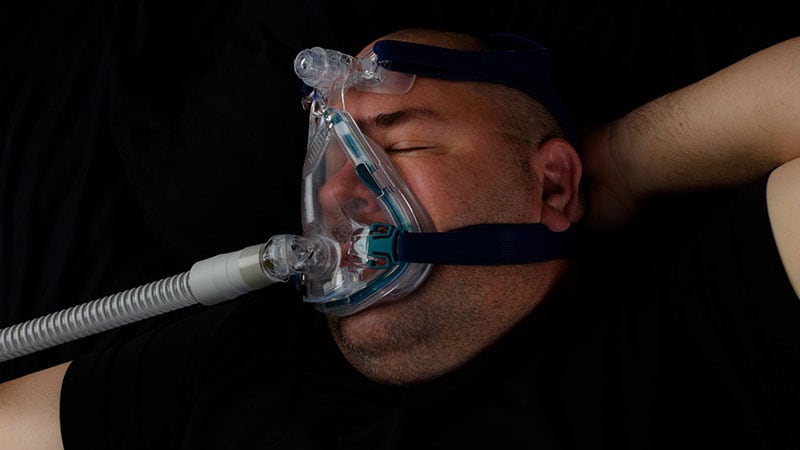Uncovering Sleep Apnea Diagnosis Challenges and Tools
Core Concepts
Primary care physicians face challenges in diagnosing sleep apnea due to underdiagnosis and symptom undervaluation by patients, but advancements in diagnostic tools and technology are making diagnosis more feasible.
Abstract
Obstructive Sleep Apnea Diagnosis Challenges
Underdiagnosis of OSA despite high prevalence.
Importance of primary care physicians in identifying OSA.
Challenges in diagnosing OSA highlighted at ERS Congress 2023.
Patients' undervaluation of common symptoms like snoring and daytime sleepiness.
Busy schedules of physicians leading to symptom-focused evaluations.
Risk Factors and Diagnosis Tools
Risk factors for OSA include structural and nonstructural elements.
Importance of comprehensive physical examination.
Questionnaires like STOP and STOP-BANG for symptom assessment.
Epworth Sleepiness Scale for self-assessment.
Importance of assessing comorbidities linked to cardiovascular risk.
Occupation and Treatment Prioritization
Occupation's role in prioritizing patients for sleep study services.
Challenges in gaining access to sleep study services and CPAP therapy.
Role of family physicians in CPAP compliance and effectiveness monitoring.
Home Testing and Future Innovations
Challenges of overnight polysomnography and long waiting lists.
Potential of home-based sleep testing with innovative sensors.
Importance of specialized teams for accurate diagnosis.
New technologies enabling cost-effective and user-friendly diagnostic sleep tests.
Sleep Apnea Diagnosis: Awareness and Tools
Stats
"Sleep apnea is underdiagnosed because the most common symptoms, like excessive daytime sleepiness or snoring, are undervalued by patients."
"Factors might include obesity, neck circumference, Mallampati score, and nasal and pharyngeal problems."
"Patients are classified as being at low, intermediate, or high risk for OSA."
"Patients with resistant hypertension, pulmonary hypertension, and recurrent atrial fibrillation following cardioversion/ablation should be prioritized for diagnostic testing for OSA."
"There are many patients that still are not diagnosed despite having severe sleep apnea, with symptoms and comorbidities."
Quotes
"Sleep apnea is underdiagnosed because the most common symptoms, like excessive daytime sleepiness or snoring, are undervalued by patients." - Cláudia Sofia De Almeida Vicente Ferreira
"You should include the occupation in the patient's profile. What is he doing? Is he sitting at a desk, or is he working at height, driving, or operating machines? These workers are high-risk patients." - Cláudia Sofia De Almeida Vicente Ferreira
"The issue about sleep diagnosis is that up to now, there was no such devices available." - Renaud Tamisier
Key Insights Distilled From
by Elena Ribold... at www.medscape.com 09-11-2023
https://www.medscape.com/viewarticle/996296
Deeper Inquiries
How can primary care physicians improve patient education on the importance of recognizing symptoms of sleep apnea?
Primary care physicians can enhance patient education by incorporating routine screenings for sleep apnea during regular check-ups. By utilizing simple yet effective tools like questionnaires such as the STOP and STOP-BANG questionnaires, physicians can prompt discussions with patients about common symptoms like snoring, daytime sleepiness, and observed breathing pauses during sleep. Additionally, providing educational materials in waiting rooms or through online portals can raise awareness about the risks associated with untreated sleep apnea. Encouraging open communication and actively listening to patients' concerns can also help in emphasizing the importance of recognizing and addressing symptoms of sleep apnea.
What are the potential drawbacks of relying on home-based sleep testing for diagnosing OSA?
While home-based sleep testing offers convenience and accessibility, there are potential drawbacks to consider. One major concern is the limited scope of data that can be collected compared to traditional polysomnography conducted in specialized sleep clinics. Home-based tests may not capture all the necessary parameters essential for a comprehensive diagnosis of sleep apnea, leading to potential inaccuracies or misdiagnoses. Moreover, the lack of supervision by trained professionals during home testing may result in errors in data collection or interpretation. Additionally, issues related to patient compliance, equipment reliability, and the need for specialized expertise to analyze the results can pose challenges in relying solely on home-based sleep testing for diagnosing OSA.
How can advancements in artificial intelligence further revolutionize the diagnosis and treatment of sleep apnea?
Advancements in artificial intelligence (AI) hold great promise in revolutionizing the diagnosis and treatment of sleep apnea. AI-driven technologies can streamline the analysis of sleep data, enabling quicker and more accurate identification of sleep apnea patterns. Machine learning algorithms can process vast amounts of sleep-related information, leading to improved diagnostic accuracy and personalized treatment recommendations. AI-powered devices can also facilitate remote monitoring of patients undergoing treatment for sleep apnea, enhancing compliance and treatment outcomes. By leveraging AI for sleep apnea diagnosis, healthcare providers can optimize patient care, reduce diagnostic delays, and enhance the overall management of this prevalent sleep disorder.
0
More on Healthcare
